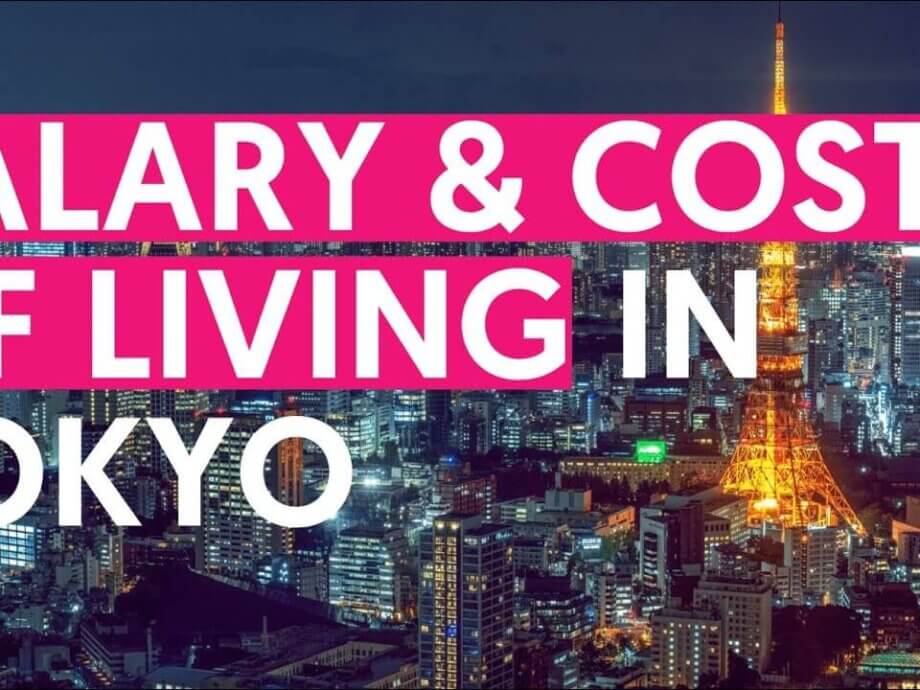Tokyo’s Salary Gap with New York Widens: What’s Behind the Numbers?
In 2025, a striking economic divide has emerged between two of the world’s most influential cities: Tokyo and New York. According to the latest Deutsche Bank Research Institute report, the average monthly salary in Tokyo is now about half that of New York. This development marks a dramatic shift from just over a decade ago, when the two cities were nearly on par in terms of after-tax earnings. The report, which compared after-tax monthly salaries in 69 major cities worldwide and converted them to U.S. dollars, found Tokyo’s average monthly salary at $2,592 (about ¥370,000), ranking 38th globally. In contrast, New York’s average stands at $5,128 (about ¥740,000), placing it seventh.
- Tokyo’s Salary Gap with New York Widens: What’s Behind the Numbers?
- How Did Tokyo and New York Drift Apart in Salary Rankings?
- What Do the Numbers Really Mean? Comparing Salary Data
- Why Are Tokyo’s Salaries Lagging? Key Economic and Social Factors
- Cost of Living: Does a Higher Salary in New York Mean a Better Life?
- Industry and Career: Where Do the Highest Earners Work?
- Living and Working in Tokyo: What Should Foreigners Know?
- Policy Responses and the Road Ahead
- Global Context: How Do Other Cities Compare?
- In Summary
This widening gap is not just a matter of numbers—it reflects deeper economic, social, and policy trends that have shaped the fortunes of both cities. Understanding why Tokyo’s salaries have stagnated while New York’s have soared requires a look at currency fluctuations, industry composition, cost of living, and broader economic policies.
How Did Tokyo and New York Drift Apart in Salary Rankings?
Back in 2012, Tokyo and New York were nearly equal in terms of average monthly salaries. Since then, several factors have contributed to the growing disparity:
- Currency Fluctuations: The Japanese yen has depreciated significantly against the U.S. dollar, especially in 2025, when the exchange rate fluctuated between 145 and 160 yen per dollar. This means that even if salaries in yen have risen slightly, their value in dollars has dropped sharply.
- Wage Growth: The U.S. has experienced robust nominal wage growth, averaging over 4% annually, particularly in high-value sectors like technology and finance. Japan, on the other hand, has seen almost flat wage growth due to persistent deflation and low economic growth.
- Cost of Living: While Tokyo’s housing rent index rose by 14% and public utility fees by 9% since 2012, these increases have outpaced wage growth, squeezing real incomes for many residents.
- Industry Composition: New York’s economy is dominated by finance, IT, and professional services, which account for 45% of its GDP and offer high average annual incomes. Tokyo, in contrast, has a higher proportion of manufacturing, retail, and public services, with fewer high-paying jobs in cutting-edge sectors.
These factors have combined to push Tokyo down the global salary rankings, while New York has maintained its position among the world’s top earners.
What Do the Numbers Really Mean? Comparing Salary Data
While the Deutsche Bank report pegs Tokyo’s average monthly salary at $2,592, other sources offer slightly higher estimates. For example, private surveys and salary databases suggest that the average monthly salary in Tokyo is around ¥576,000 ($3,950), which is still significantly below New York’s average. The national average in Japan is even lower, at about ¥515,000 ($3,794) per month, or ¥4.60 million ($31,500) per year.
In New York, the average monthly salary is reported at $5,721, according to city statistics and independent comparisons. This means the gap between the two cities is not only persistent but also growing, with New York offering nearly double the average salary of Tokyo.
It’s important to note that these figures represent averages, which can be skewed by very high or very low earners. Median salaries, which represent the midpoint of all earners, provide a more accurate picture for most workers. In Japan, the median monthly salary is about ¥472,000 ($3,240), meaning half of workers earn less than this amount.
Why Are Tokyo’s Salaries Lagging? Key Economic and Social Factors
Several structural issues have contributed to Tokyo’s relative decline in salary rankings:
1. Currency Depreciation and Globalization
The weakening of the yen has had a profound impact on the international value of Japanese salaries. Even as companies in Japan have increased base pay—wage hikes reached their highest level since 1991 at 5.1% in 2024 and 5.46% in 2025—these gains are largely offset when converted to dollars. This makes Tokyo less competitive for global talent and reduces the purchasing power of Japanese workers abroad.
2. Industry Structure and Innovation
New York’s dominance in finance, technology, and professional services has driven up average salaries. These sectors are not only high-paying but also fast-growing, attracting top talent from around the world. Tokyo, while a global economic powerhouse, has a larger share of its workforce in manufacturing, retail, and public services, which tend to offer lower wages. Efforts to shift toward high-value industries in Japan are ongoing but have yet to close the gap.
3. Demographics and Labor Market Trends
Japan faces a rapidly aging population and a declining birthrate, leading to a shrinking workforce. This demographic challenge puts downward pressure on wage growth and limits the pool of available talent. In response, the Japanese government has launched labor market reforms to boost wages, narrow income gaps, and attract foreign workers. The number of foreign workers in Japan reached a record 2.3 million in 2024, a 12.4% increase from the previous year.
4. Gender Pay Gap and Social Equity
The gender wage gap in Japan remains significant. Women earn only about 75.7% of what men earn, reflecting traditional employment practices and underrepresentation in senior roles. Addressing this gap is a key policy priority, with efforts underway to promote women’s participation in the workforce and support work-life balance.
Cost of Living: Does a Higher Salary in New York Mean a Better Life?
While New York’s average salary is much higher than Tokyo’s, the cost of living in the Big Apple is also among the highest in the world. According to the Deutsche Bank report and other cost-of-living indices, New York ranks as the most expensive city in the U.S. for rent, with housing costs eating up a significant portion of residents’ incomes. Even with higher salaries, many New Yorkers find their disposable income limited by sky-high rents, transportation, and everyday expenses.
Tokyo, while not cheap, offers a more balanced cost structure. Rent and daily expenses are generally lower than in New York, especially outside the city center. For singles, the monthly cost of living in Tokyo ranges from ¥300,000 to ¥400,000, while families may need ¥700,000 to ¥1,000,000. However, without employer-provided allowances for housing or education, disposable income can be tight, especially for expatriates.
Both cities offer world-class infrastructure, safety, and amenities, but the quality of life depends heavily on individual circumstances, including salary, family size, and lifestyle choices.
Industry and Career: Where Do the Highest Earners Work?
In both Tokyo and New York, industry and occupation play a major role in determining salary levels. Here’s how the landscape breaks down:
- Technology and IT: In Tokyo, IT professionals and engineers can earn over ¥10 million ($68,500) annually, with senior engineers at top firms making up to ¥30 million ($205,500). In New York, tech salaries are even higher, reflecting the city’s status as a global tech hub.
- Finance and Consulting: Investment bankers in Tokyo earn between ¥8 million and ¥30 million ($54,800–$205,500), while management consultants at top firms can make ¥14 million ($95,900) or more. New York’s finance sector offers some of the highest salaries in the world, with average annual incomes in the $100,000 range and above.
- Healthcare and Education: Salaries in these sectors are generally lower than in finance or tech but remain competitive in both cities, especially for specialized roles.
Executive compensation in Tokyo has also risen, with CEOs earning an average base salary of ¥12 million ($82,200) and total compensation packages reaching as high as ¥271 million ($1.86 million) when bonuses and long-term incentives are included. New York’s executive salaries are typically higher, especially in multinational corporations.
Living and Working in Tokyo: What Should Foreigners Know?
For expatriates and foreign professionals, Tokyo remains an attractive destination due to its safety, cleanliness, and high-quality infrastructure. However, the salary gap with New York means that negotiating a comprehensive compensation package—including housing, education, and tax allowances—is crucial. Japan’s progressive tax system, with a top rate of 45%, and the potential for double taxation make it essential to understand local and international tax treaties.
Foreign professionals in Tokyo’s middle management can expect annual salaries in the ¥9–12 million range, but actual disposable income depends on the cost of living and benefits provided by employers. The government and private sector are working to make Tokyo more competitive for global talent, including through expanded visa programs and support for foreign workers.
Policy Responses and the Road Ahead
Recognizing the challenges posed by stagnant wages and a shrinking workforce, the Japanese government has introduced several policy initiatives:
- Wage Incentives: Tax incentives for companies that raise wages, especially in high-value sectors.
- Industry Transformation: Support for startups, deregulation, and investment in financial and IT clusters to shift the economy toward higher-paying industries.
- Human Capital Development: Subsidies for reskilling and job-based employment to improve labor productivity.
- Gender Equity: Expanded support for childcare and work-life balance to reduce the gender wage gap.
While these measures are beginning to show results—wage growth in 2024 and 2025 was the highest in over three decades—the gap with New York is unlikely to close quickly unless the yen strengthens and Japan’s economy shifts more decisively toward high-value industries.
Global Context: How Do Other Cities Compare?
The Deutsche Bank report and other global surveys show that cities with the highest salaries are typically major financial and tech hubs in developed economies. Besides New York, cities like Zurich, Geneva, and London consistently rank near the top. Tokyo, once a leader, now finds itself in the middle of the pack, reflecting broader shifts in the global economy.
Cost-of-living indices also reveal that high salaries often come with high expenses. For example, while New York and London offer high pay, they also have some of the world’s most expensive housing markets. In contrast, cities in emerging markets may offer lower salaries but also much lower living costs, making them attractive for certain expatriates and remote workers.
In Summary
- Tokyo’s average monthly salary in 2025 is about $2,592, roughly half of New York’s $5,128, according to Deutsche Bank.
- The gap has widened due to yen depreciation, slow wage growth in Japan, and rapid salary increases in New York’s high-value sectors.
- Cost of living in New York is much higher, especially for rent, but Tokyo’s rising expenses are also squeezing real incomes.
- Industry, experience, education, and gender all play significant roles in determining salary levels in both cities.
- Japan is implementing policy reforms to boost wages, attract foreign talent, and shift toward higher-paying industries, but closing the gap with New York will take time.
- For expatriates, Tokyo remains attractive for its quality of life, but comprehensive compensation packages are essential to offset the salary gap.












